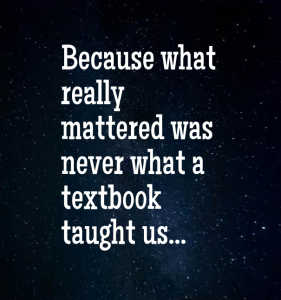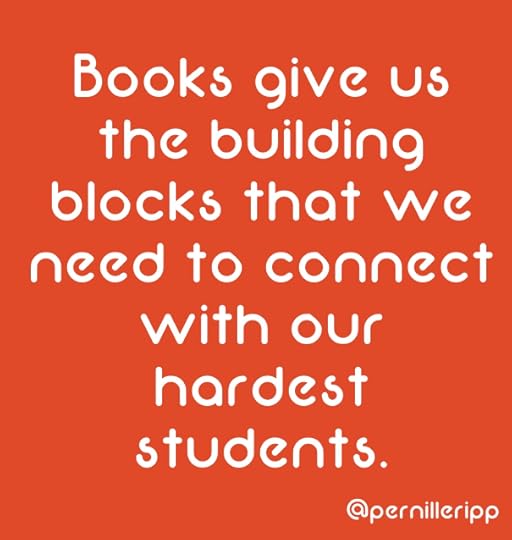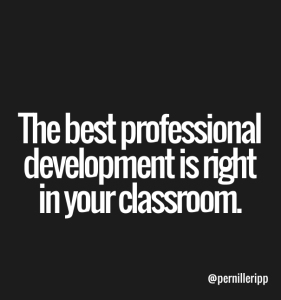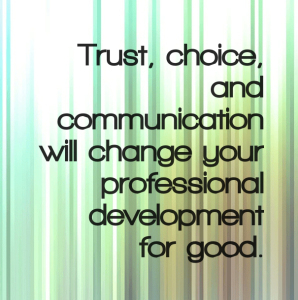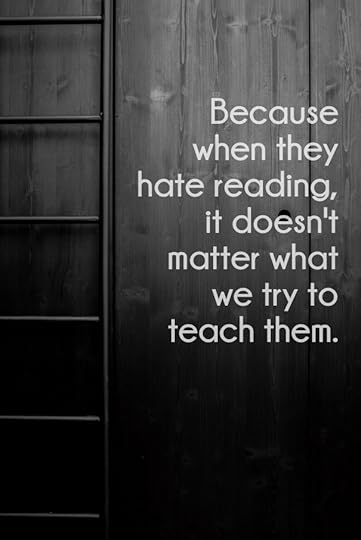Pernille Ripp's Blog, page 66
November 9, 2015
A Few Ideas for Better Writing Conferences
Thea, our oldest, missed her bus today which meant that I missed my morning prep as I drove her to school. Missing my prep is usually not a big deal, but this morning I was feeling rather sleep deprived (thanks to the amazing book An Ember in the Ashes which I just had to finish last night) and overall rather discombobulated. My very first instinct as I tried to get ready in the 4 minutes before the students showed up was to cancel the writing conferences I had planned with the kids, after all, I was not ready. I had not pre-read all of their drafts, made copious amounts of comments in them, nor had I carefully selected who I would meet with. Surely, I could not lead their conferences. Surely, they could would get anything out of it if I did.
Yet, a tiny voice inside me kept whispering that I had promised them a writing conference and I had to keep that promise. That perhaps this was my chance to not lead their conferences. To not have all of the answers, but instead be ready to listen and support. To let them tell me what they needed rather than vice versa. So I did, and it felt like I held my breath all day, but it worked. It worked! And I could not be happier with the outcome. So what did we do?
I had the students sign up to confer. Rather than me telling them to meet with me, I left it open for those who wanted to meet. This meant that those kids with burning desires to show their work got a chance to do so. In the one class where I didn’t have a lot of students sign up, I walked around and did mini-conferences as they wrote, only interrupting when there was a good moment to ask my questions. At the end of the day, I marked down whom I had conferred with so that I can keep track of who I still need to meet with and will plan accordingly in the days to come.
I asked them what our purpose was for the conference. Using the question, “What would you like me to look for?” really helped students narrow the focus of our conference. Often times, a student will tell me they just want my opinion, but through follow up questions, we were able to narrow it down. Some kids had an immediate idea of what they needed from me, others needed a little more prodding. Typical requests became wanting to see if they had too many details, if their flow was choppy, or other specific needs that were important to them. Because they had to describe what they needed, they had to reflect on their piece and purposefully weigh those needs. Rather than just having me read it for an opinion, they ended up with specific feedback that could support them as they continued writing.
I didn’t write suggestions. I purposefully did not add my thoughts to their document in front of them, nor will I for a while yet. I think with the advent of Google Docs our comments/suggestions/edits have become just another checklist for fixing their writing, rather than supporting them in becoming better writers. As my friend, Jess Lifshitz pointed out, “We need to teach students how to be writers, not just follow our directions to fix their writing.” (paraphrase) I couldn’t agree more.
We kept it short. Because I was only given one purpose, students and I spoke briefly and then they were off to work again. Because I was not editing their work, we quickly got to the point of their needs and they could continue working on their vision for their piece, rather than be tainted by my ideas.
I held my tongue. I have a wide variety of writers in our classroom, many who identify themselves as non-writers. I therefore knew that this very first writing conference would set the tone for the rest of the year and further fuel their relationship with writing for better or for worse. I therefore stopped myself from pointing out all of the things they could work on, all the mistakes that should be fixed, all of the things that should get attention. We will get to it later, right now they just need to write.
I didn’t give them my opinion. And not one asked for it either. Often our opinion is what students strive to hear, to get that seal of approval. Yet, I have seen what an honest opinion can do to a child that is still drafting their story. How even the most carefully wrapped sentence can totally stop a child from writing. Instead, I kept it to the chosen focus. I asked them their opinion, I asked them to speak about their piece. And they did. And I listened, and then they found their own path rather than attempting to walk on mine.
At the end of today, I was excited, not exhausted as I normally would have been. It was not me who had done most of the talking, it was the students. It was not me who had set the purpose, it was the students. Not once had a child asked me if their story was long enough. Not once had a child asked me whether their story was good enough. Instead they had told me how excited they were to write, how they could not wait for me to see the final version, how they might try a new story if this one doesn’t go as planned. Just as I had hoped. Just like it should be. Perhaps being discombobulated on a Monday was not such a bad thing after all.
If you like what you read here, consider reading my book Passionate Learners – How to Engage and Empower Your Students. Also, if you are wondering where I will be in the coming year or would like to have me speak, please see this page.
Filed under: aha moment, being a teacher, student voice, writing


November 7, 2015
The Things That Matter the Most
I have spent a week listening to my students as they told me what they were proud of and how I could change to make 7th grade English a better class for them. Child after child. Conversation after conversation, and although my brain is tired from all this sitting, and I am ready to go back to working with all of them, I could not help but notice the things that kept coming up in as we spoke.
They told me that they are becoming stronger readers. That they have these goals that they need to accomplish, perhaps with some help from me. That class is fun (at times). That it is not as bad as they thought it might be. And over and over and over they tell me about the things that have mattered the most to them…
Having books in our classroom. They know that when they finish a book, another one is right there. That if they need to abandon the one they have selected, that many others await. That they love our school library but are so thankful for the library we have as well. The books seem to call out to them as they sit in our room asking to be read.
Having time to book shop. Once every few weeks we spend half a class simply book shopping. We lounge in our time with the new (and old) books waiting for us on the tables. I book talk a few and then watch as they meander along the piles, picking up book upon book and gazing at the pages. Writing a few down, sharing them with others. Book shopping is an event, something to look forward to and they ask for it as they see the piles of books grow by my table.
A list of books to be read. We have several pages in our readers notebook dedicated as our to-be-read list. The students are now getting in the habit of using it whenever they need a new book. They are sharing them with each other too, “Did you add this book yet? Oh, we have the same book listed.” They do not forget about the books they are waiting for (right now Orbiting Jupiter and Crenshaw have a very long wait list) and with their list in hand they always find their next read.
A shared love of picture books. All students are accomplished readers in our room because they can all pick up a picture book and “get it.” They can all discuss the problem of Mustache Baby. They can all discuss the theme of Unicorn Thinks He’s Pretty Great. They can all learn about courage from Malala and Iqbal. Because those stories are found within picture books. Because picture books allow us to love reading. To access complex texts that no one has ever told us is not at our level. To remember that reading is meant to be fun, even if it is a sad book.
And finally, they told me that the teacher matters. That they need a teacher that does not judge. A teacher that loves books. A teacher that reads. A teacher that does not give up. A teacher that hounds them at times and holds them accountable. A teacher that sees them, even when they try to be invisible. A teacher that I try to be, even when I feel I fall short.
And those are the things that mattered the most.
If you like what you read here, consider reading my book Passionate Learners – How to Engage and Empower Your Students. Also, if you are wondering where I will be in the coming year or would like to have me speak, please see this page.
Filed under: being a teacher, being me, books, picture books, Reading, students


November 6, 2015
A Story of A Boy and a Book
This originally was posted on The Reader Leader Blog from Scholastic. You should really see the other posts on the blog!
He came to me with anger seeping out of every pore, a cloud of dismay surrounding him. Looking at us with eyes that told the world that he was not afraid, that he knew that we could not make him do whatever it was we intended to ask. That he would fight us with every cell in his body just to stay in control. Yet, for all of his anger, for all of his glances directed my way, he wasn’t one of mine. I didn’t have the pleasure of teaching him. He was in a separate English class, trying to be taught all of those things he had missed because of his anger and outbursts.
He wasn’t afraid of me, nor very angry. I posed no threat since I was not one of the ones asking him to please do, please sit, please stop. So every day I greeted him, smiled when our paths crossed, and told him that all of those books I had in my classroom could be his if only he wanted to read one. That even if he wasn’t mine, those books were still meant for him. Every day, he smiled and went on his way, seeing little need for any of the books I might have to share. As the weeks passed, he grew. He pushed his boundaries as children can do so well, always inching along that very fine line of control and struggle. I watched from afar; after all, he was not mine, so all I could do was smile and nod and remind him of the books that awaited.
One day, he didn’t just smile, but instead asked in all earnestness, “When can I be your student? When can I come to your class?” It wasn’t because he didn’t like the class he was in, or the teacher who taught him, but the books were calling, as they often do to so many kids that feel lost. I smiled and shrugged, repeated that the books were there for him whether he was mine or not. For weeks this played out until one day, he entered our classroom and I held my breath; after all, now he was mine, now I was one of the ones that would ask him to stop, to sit, to do. And I was scared of what would happen.
He sat quietly that first day in class. Bent his head and wrote ever so slowly, picking out his words with care, wanting so much to fit in and not just be known as that kid with anger issues. As the other students cleared out, he lifted his head, looked at the clock and asked, “Is it now? Can I pick my book now?” And he walked to the shelf of the book he had eyed and grabbed it, holding on to it as if I would ask him to put it down. “What do I do now?” he asked. “You read it,” I said, “And then you bring it back.” “That’s it?” “That’s it.”
So he left that morning, clutching Amulet: Book 1 to his chest as if it were a safety blanket. And I figured that the minute he left our classroom, that book would be forgotten; his day would develop, and soon our conversation would be a distant memory as his ingrained behaviors clouded his judgment once again. So I wasn’t surprised when at lunch he walked up to me and handed me back the book. “Did you not like it?” I asked, already running a possibility of other titles in my head that I could offer him. “I am done,” he said. “Done? But I thought you were so excited to read it?” I asked, my voice laced with confusion. “I did…I loved it…Can I have the next one please? I promise to bring it back.” He had read it already. He had fallen in love with a book. He was ready for the next one. For one moment in that day, he was just a kid who loved a book, just a kid like all the other kids, asking for the next book in a series that had spoken to him. So we walked into our classroom, found the next book and he left, clutching it to his chest once more, ready to wrestle anyone who would try to take it away.
We fall in love with books when they speak to us. When within their pages, we find a piece of ourselves we didn’t know we were missing. We clutch these books to our chests long after we have stopped reading them as a way to shield us from a world that we sometimes do not understand. Books become absorbed into our identity and allow us to risk, to love, to care about something even when we feel the most vulnerable. Even when we feel the world is not for us, we can find safety within the pages of a book. That is why my classroom is filled with books–so that every child has a chance to find a piece of armor, so that every child has a chance to find a vessel that will hold his dreams and protect them when they need to be. My students may not understand each other’s pasts, each other’s behaviors, but they understand books, and so when a child falls in love with a book and it becomes part of him, it builds a bridge for others to understand that child better. For others to be let in.
Books provide us with the magic that we dream of as teachers. Books, whether fiction or non, chapter or picture, give us the building blocks that we need to connect with our hardest students. To connect with those that we sometimes feel at a loss to reach. That boy didn’t stop being angry. He didn’t stop feeling that the world was out to get him, but he did start believing that somewhere in the world was a place for him to fit in. That he too could be a reader, that he too could belong. That his anger would not be the only thing that defined him, even when it spoke the loudest. That boy knew he had a home with us whenever he needed it. He still does, even though he is no longer around. My door is always open, the books always calling out for anyone who needs to belong, if even for a moment. I will never forget that boy and his book.
If you like what you read here, consider reading my book Passionate Learners – How to Engage and Empower Your Students. Also, if you are wondering where I will be in the coming year or would like to have me speak, please see this page.
Filed under: aha moment, being a teacher, being me, books, Literacy, Passion, students


November 4, 2015
How Can I Make This Better For You?
For the past three days my students have read. They have sat wherever they wanted, immersed in the book of their choice. They have book shopped. They have reflected, but mostly just read. Whispered about their books. Handed those in they have finished. And waited for me to call their name, knowing that soon it would be their turn.
I have sat at a table and spoken to them all, one by one, taken the time it takes. “How is English going…How can I be a better teacher for you….What is not working…” Armed with the survey they have takes as we finished our very first quarter, they have told me their truths. They have looked at me and then gladly told me everything I have needed to change. And I am so grateful. Think of the guts that it takes to look at your teacher to tell them that something is not working for you. Think of what that says about the community we have.
So for the past 3 days, I have listened. I have nodded and taken notes. I have asked for further explanation, and I have also asked for help. How can we make it better? How can we find more time? How can we make it easier? More engaging? More of what they need? How can we…
We read books to become better teachers. We ask colleagues for help. We meet with administrators. We reach out to parents. We connect and we ask and we ponder together. Yet, how often do we ask the very kids that we teach? How often do we stop what we are doing simply to conference with them? Not about their work but to uncover how things are going? What they need? How we can change? How often do we stop so we can learn from them? Not often enough, but that can change. It starts with us. And it starts with a simple question; how can I make this better for you?
If you like what you read here, consider reading my book Passionate Learners – How to Engage and Empower Your Students. Also, if you are wondering where I will be in the coming year or would like to have me speak, please see this page.
Filed under: aha moment, assessment, assumptions, being a teacher, being me, conferences, connect, Passion, student voice


November 2, 2015
How to Do PD Right – Yes, It’s Possible
Last week, I had two full days of professional development, or PD as we like to call it. I shared my excitement on Facebook about the two days and, of course, was met with disbelief. Excitement? Really? Since when has PD actually been something to look forward to? And so I realized that I might be in the minority when it comes to excitement for PD, that I might be a lone voice among the educational community and yet, in my district I am not. Because my district, Oregon School District, has figured out how to do PD right.
They operate under a few simple things; trust, communication, and choice. Tenets that far too many districts kind of believe in when it comes to PD but then really don’t when it comes to setting the agenda. Yet, my district not only believes it, they live it, and it is apparent every time we are given time to learn as professionals. Our two days consisted of many different things, all meant to fulfill the needs we not only have as a community, but also as individual learners.
We started with curriculum time. Just that. No set curriculum to go through. No agenda. We were not even told who we had to meet with. Instead we given the true gift of time to meet with those we felt we needed to meet with. And so we did, and we planned, and we even book shopped as we prepared for book clubs. They trusted us to use our time in the best way possible, in the way that we would see as most beneficial, and so we did.
Then we were given small group work time. We have 4 separate professional learning communities happening in our school, so each group met to check in and then as a group we decided what we needed to do. My group had decided it needed time to read the books our school had ordered for us (on our request of course). So we did, we met after and we discussed what we found. Not in order to fill out a sheet, or to check off a box, but because we wanted to learn from each other.
The afternoon was filled with whole school learning as a coach came in to teach us how to coach each other and students. 2 hours were spent trying to make our community stronger and more cohesive. While confusion may have arisen from things we did, it still started a lot of conversation. It still gave us tools we could use. It still gave us a chance to learn from each other.
We ended the first day with work time for whatever we needed. Again, no need to check in. No need to report somewhere. Just work, get it done, whatever “it” is.
The second day had two components to it. The first part of the day being an Edcamp style set-up where we could choose to go to whichever sessions our colleagues were holding, the second being time to work on Educator Effectiveness, our state evaluation system. The morning was fantastic, there were so many sessions, it was hard to pick. And the best part was the variety of the sessions; from discussion of curriculum, to brainstorming, to hands-on projects. From the advanced to the basic, there was room for all. That afternoon we ended our two days with time to do all of the things that our government is asking us to do. Whether it was to meet with our evaluator, meet with a colleague, simply fill out the many online forms, or contemplate how to reach our goals, we were given the time. We were given the tools. We were given the support to be the very best educators we can be.
I wrote about trusting staff in my book Empowered Schools, Empowered Students. I wrote about what it could do for an entire district if professional development started to mean something again. I wrote about how a district could actually use these days to honor the talent, the curiosity, and the need of its educators by trusting them. By listening to them. By offering choice. When I wrote that book, I had no idea that I would get to work for a district that lives out this vision every day. I am so grateful that my dream is not just, but actually a part of the tapestry of where I get to teach. PD can be done right, after all.
If you like what you read here, consider reading my book Passionate Learners – How to Engage and Empower Your Students. Also, if you are wondering where I will be in the coming year or would like to have me speak, please see this page.
Filed under: aha moment, being a teacher, being me, PLN, principals, trust


October 31, 2015
Then It Just Doesn’t Matter
I have some staunch book haters this year. Some kids who really hate reading. Some of them hate writing as well. And not just in a “7th grade trying to be cool” kind of way, but in a deep-seated notion that rules their decisions, their actions, and their days. They hate reading. And they are telling me loudly.
They are pushing me to think about what I do in our classroom. How I try to wrap them up in the excitement, how my own relentless quest to find that perfect book along with them is one that deserves the time it gets. That the very act of loving reading (or writing or math or science) is something that we must find the time to cultivate in our schools. Even when I feel the pressure of the year and the deadlines looming over me. Because when they hate reading (or insert whatever school related subject here) then it just doesn’t matter what strategies I try to teach them.
When they hate reading then it just doesn’t matter that I am trying to teach them how to think deeper about text.
It just doesn’t matter that I am trying to teach them to find the signposts.
It just doesn’t matter that I am trying to teach them how to write about their thoughts. How to access harder texts. How to understand text features or write a summary. How to analyze rather than paraphrase.
When they hate reading then that is all they can think about. They refuse to access the skills that they need to practice because everything we do is attached to something to something they hate.
And I get it, why would you want to do more with something you despise?
So when they hate reading we must attack that first. Not the strategies, not the skills, but the emotion that is attached to everything we are trying to do. We must dig and dig and dig to find out why. And we must ask, and we must talk, and we must give them a chance to change their mind, if even just in the slightest way, as we create classrooms that are run on a culture of love for our subject, rather than a need to cover curriculum.
We can assume that they hate it because it is hard. We can assume that they hate it because they find it boring. That they hate it because they have to sit still, because they cannot focus, because they would rather be doing so many other things. But we won’t know until we ask. We wont know until we acknowledge the hatred or whatever emotion they carry so that we can do something about it.
Too often we barrel on, hoping that within our teaching something magical will happen. Yet within our race to teach to the standards, to explore the strategies, to cover, cover, cover, we cannot forget to develop the love, develop the relationship that students need to have with what we teach so that can become invested, even if just a little bit.
So when they hate reading, or whatever other thing they loudly proclaim to hate, don’t just teach. Listen. Ask. And then do something about it. And not just by yourself, but with them.
If you like what you read here, consider reading my book Passionate Learners – How to Engage and Empower Your Students. Also, if you are wondering where I will be in the coming year or would like to have me speak, please see this page.
Filed under: aha moment, being a teacher, books, Literacy, Passion, student voice


October 30, 2015
Great Picture Books to Use for Again & Again – Notice & Note
One of the main texts we use to guide our reading instruction is the amazing Notice and Note: Strategies for Close Reading by Kylene Beers and Robert Probst. This book provides us with the foundation for having deeper reading conversations and a common language as we develop our thoughts. While the book has excellent text ideas to use as mentor texts, I thought it would be nice for my students to use picture books on the very first day of a new strategy before we delve into the longer text excerpts. I have therefore looked for picture books I could use with the different strategies and will publish posts as I have them for the 6 different strategies since I cannot be the only one looking for ideas.
The first post was on Contrast & Contradictions, then followed Aha Moments, Tough Questions, Words of the Wiser, and now comes a tougher one to find picture books for Again and Again.
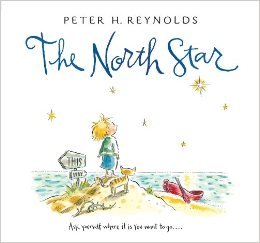
I admit that The North Star by Peter H. Reynolds was the first one that came to mind for this strategy of noticing when something is repeated again and again. Why? Because the cat becomes a symbol for so many things in this book and is something that my students often notice.
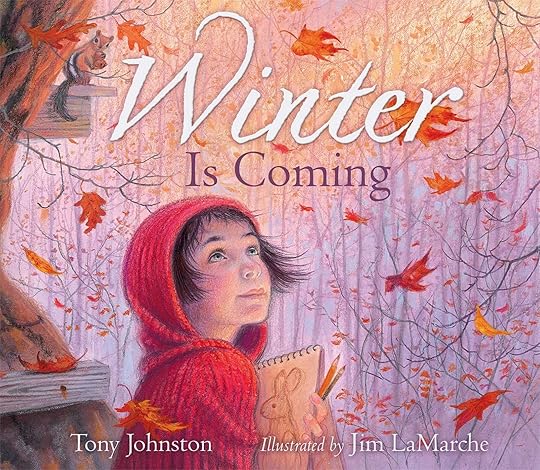
With the simple line “Winter is coming” this picture book aptly titled Winter is Coming by Tony Johnston and illustrated by Jim LaMarche is great for just starting out with the strategy since the line is easy to spot and will lead to good discussions about how the book changes even though the line stays the same.
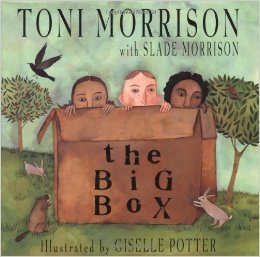
The Big Box by Toni Morrison and Slade Morrison illustrated by Giselle Potter has a lot of repetition making it an ideal candidate for again and again. Because the words do not seem to mean much until you really start to think about their meaning. What is the symbolic meaning of the big box?

One of the most beloved picture books in our 7th grade classroom is I Want My Hat Back by Jon Klassen which due to the hat and the repeated phrases of the bear and the rabbit are great for inferring based on the again and again moments.

Another favorite is Wolfie the Bunny by Ame Dyckman illustrated by Zachariah OHora when Dot the Rabbit keeps repeating that Wolfie will eat them all up. This leads to some great discussion of why she would keep saying that and how we do the same as people when we judge.
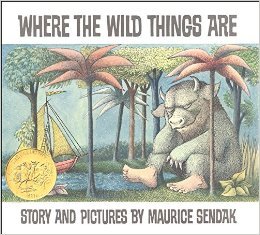
The again and again moment may be a little harder to find in the classic Where the Wild Things Are by Maurice Sendak but kids always recognize it when they reach the final page and the supper is still hot. Why does this matter and how does it link in to earlier events?
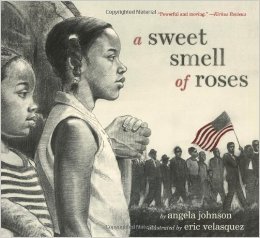
A Sweet Smell of Roses by Angela Johnson is a beautiful picture book and the again and again lies in the use of the color red as well as the phrase “Sweet smell of roses…” throughout the book.

this beautiful new picture book, My Two Blankets by Irena Kobold and Freya Blackwood keeps eluding to a blanket. I love the metaphor that the blanket (s) represent.
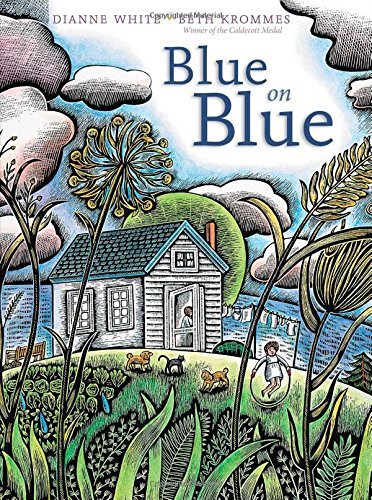
Blue on Blue by Dianne White and Beth Krommes has a fantastic again and again in the way the color words are used. While not as obvious as an again and again moment, I am looking forward to seeing if students can discover the pattern.
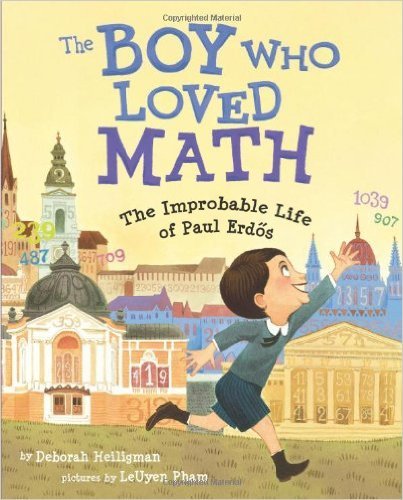
We are about to start our nonfiction focus for the year so I am so glad I found some great again and again moments in The Boy Who Loved Math by Deborah Helligman with pictures by LeUyen Pham. The way the numbers are colored throughout the pages will definitely catch the eye of students.
As always, I turned to the awesome Notice and Note community on Facebook and asked them to share their favorites as well. Here they are.
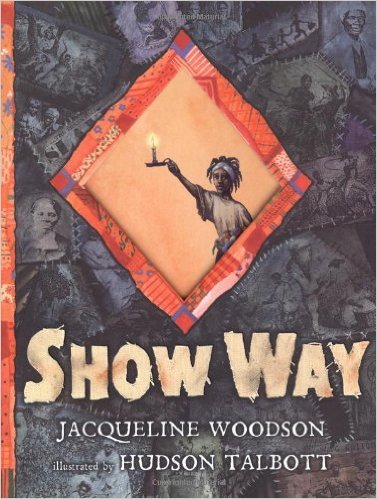
Show Way by Jacqueline Woodson.

Frog on a Log? by Kes Gray and Jim Field.

Little Elliot Big City by Mike Curato
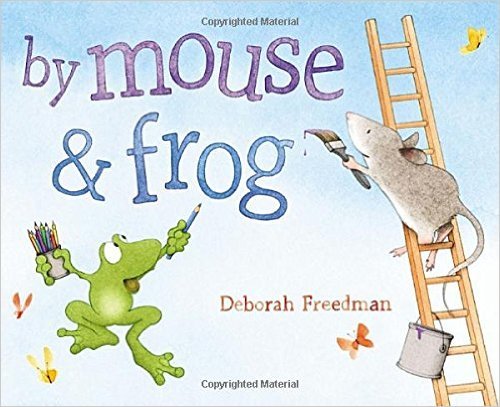
By Frog and Mouse by Deborah Freedman

Something Beautiful by Sharon Dennis Wyeth
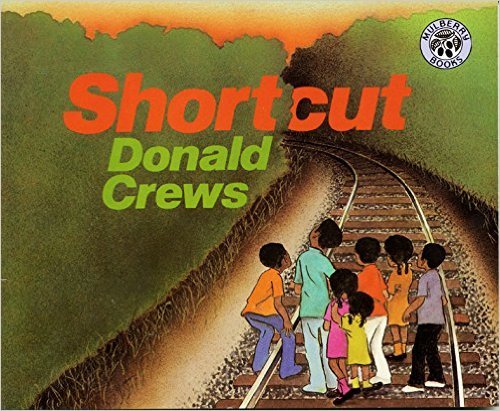

Chrysanthemum by Kevin Henkes.
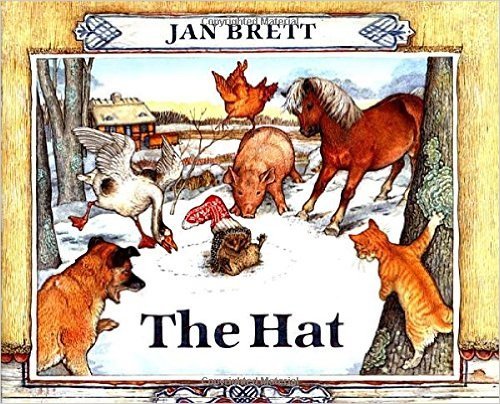
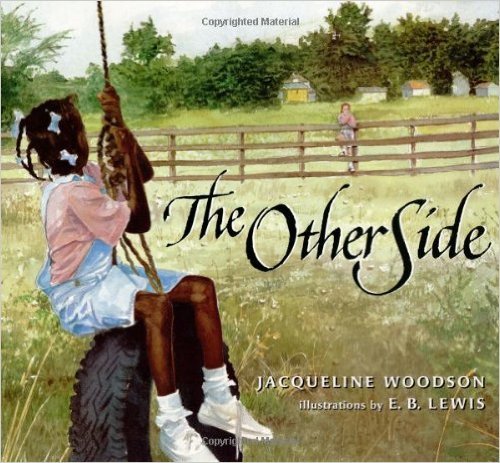
The Other Side by Jacqueline Woodson
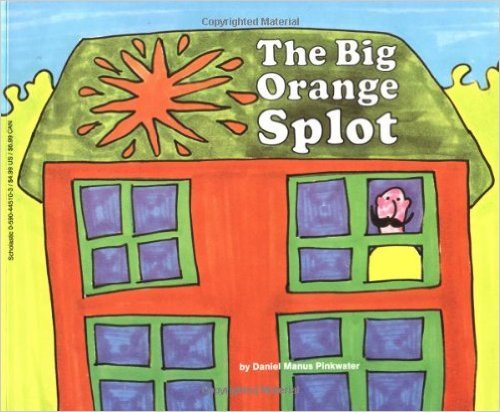
The Big Orange Splot by Daniel Manus Pinkwater
As always, please add your favorites for Again and Again in the comments. Also, did you see the new Notice and Note for Nonfiction? I am so excited to read it.
Filed under: books, Literacy, picture books


October 28, 2015
Some Ideas for Personalizing Learning in the Younger Grades
“Mom, you have to see this…?”
Thea hands me her science project, her very first in in 1st grade, and she is so excited she has a hard time standing still.
“I have to do this thing and I get to choose and I know I want to do coyotes and a video so we need to learn stuff…”
I grab the paper from her hand and once again marvel at the ingenuity of her teacher and the district we both are in.
Personalizing learning in the younger grades has always been something I felt slightly clueless about. After all, most of the kids I have taught have been older than 9. Yet, by watching what Thea is experiencing in her 1st grade classroom, I have a few ideas for how learning can become more personalized in the younger grades in order to create more passionate learners.
Give scaffolded topic choice. While this seems like a no-brainer, I think giving choice looks a lot different in a 1st grade classroom versus a 4th grade. I know that 6 year olds often have many ideas, which can either lead to brilliance or indecisiveness, so I have seen how a limited amount of choice in specific areas can really help them get engaged. In Thea’s science project she was told to study a Wisconsin animal and was then given a suggested list to select from. She knew right away when we read the words “Coyotes” that they would be her choice, however, her teacher also left it wide open for any animals not on the list as long as they were found natively in our state. Having choice, but with limitations helped Thea get straight to work, and helped her get excited about her topic.
Have many ways to access information. Her teacher did not place a limit on how she should access the information but gave us ideas instead. We therefore watched real coyote videos on YouTube, checked out books, found a PBS kids show, and also found pictures online. Not being limited to one method of finding information meant that we could adapt it to what we had access to, as well as what would work for Thea in the moment.
Have various ways to show learning. While all the students had to do a fill-in-the-blank written report they also had to come up with a way to present their knowledge to the class. A few choices were given; diorama, poster, or a video, but again you could also come up with your own idea. Thea immediately wanted to do a video because she thought it would be fun. As we discussed it more in detail, she decided to act like a teacher because she wants to be one when she grows up. Again, having this choice in how she would present her information made the assignment even more meaningful to her because she got to express her knowledge in a way that made sense to her.
Have selective goal setting. The students all have several goals in each subject area, but the teacher lets them choose which one they want to pay special attention to. That goal gets a star next to it. When they have centers, one of their stations is for working on their selected goal, a clever way of tapping into what they think they need themselves.
Let them pick partners. Even if you think it is a bad idea. We assume more often than not that students will make a bad choice rather than a good one. Yet, Thea tells me proudly how often she selects a new partner for math because she wants to try working with them. This experience not only offers her a way to learn alongside someone else, she also gets to explore more kids who might be a great friend for her. What an awesome skill to work on.
Have them self-asses with smiley faces. Thea is just learning how to read and write, so having them self reflect through writing would take a very long time. A quick and easy way to self reflect is by using smiley/frowney faces as you go through their learning. Again, this allows students to take control of what they felt successful in and set goals for upcoming learning. Another idea is to have students do a video or voxer message where they self-reflect. This can then also be shared with parents to see how a child thinks.
Discourage parent over-involvement. When I first saw the science project, my heart sank a little because I thought of how much work this might be for Brandon and I. Yet, in the rubric itself, it said that to get a “4” or a “3” the work should not be parent produced but rather originate from the child with only minimal parent support. So that is exactly what we did. While we discussed with Thea what she wanted to do, we really wanted the ideas to come from her and then helped her as she needed. The end result; a kind of messy but pretty funny video (who knows if there is a king coyote anywhere?) that clearly shows her enthusiasm for the topic, as well as her knowledge.
I am amazed at the trust Thea’s teacher puts in her little learners and am also reminded in how often we underestimate kids. Personalizing learning is not something we should start when we think kids are old enough, they are never old enough. It is something we should start right away because that is what will create classrooms filled with curious students. That is what will create passionate learners.
If you like what you read here, consider reading my book Passionate Learners – How to Engage and Empower Your Students. The 2nd edition and actual book-book (not just e-book!) just came out!
Filed under: Be the change, Passion, Personalized Learning, student driven, student voice


October 27, 2015
Want to Be Our Audience?
My fantastic 7th graders are working on short choral poetry performances and would love a real-live audience. Well not live, but actual kids to watch their short videos and then give them feedback on their performance. We are looking for 4th grade and lower to assess us, videos will be shared via Google Drive and feedback will be given via a short Google Form. This is open to anywhere in the world. Videos will be posted next week and then we would love feedback by the following Monday, November 9th.
If you are interested, please fill in the form below and you will receive a link with the videos when they are available, you can do as many as you would like.
Filed under: authentic learning, global, projects, students


October 25, 2015
On Slow Readers and What It Means for Student Reading Identity
I am ready to hang a banner in our classroom to loudly display the following words, “Being a slow reader does not make you a bad reader!” and then point to it every time a child tells me with a downward glance that they are slow readers. The shame of the designation oozing from them.
Since when did taking your time as you read become something to be ashamed of?
And yet, they continue to tell me they are slow as they share their true reading lives. They tell me that being a slow reader means they hate reading, that they cannot find any books, that there is no way they will ever read enough books in 7th grade and that there is nothing to be done about it. They have given up because of speed. They have given up because of everything they have attached to the word “slow.”
And with our emphasis on getting things done, including books, in our schools I cannot blame them.
So I tell them instead that they are not “slow,” they are simply taking their time. That yes, increasing reading speed can become a goal for them but that it should not be the only goal. That I understand that when you read at a slower pace (notice the difference in word choice) that you sometimes lose meaning so we need to find a pace that works for them. Because you see, being a fast reader does not make you a great reader. In fact, I struggle publicly with my own fast reading and have as one of my goals that I need to slow down.
Yet, they do not believe me. Not yet anyway. And how can they? When the standardized tests they take to measure their worth as readers are timed? When the countdown clock appears urging them to hurry up and answer or else it will count against them? When I give them all a book challenge of reading 25 books or more and they automatically feel that is a mountain they cannot conquer? When they see their friends whizzing through books and cannot help but compare themselves?
We create environments where fast = good and slow = bad.
So as Thomas Newkirk says, “There is no ideal speed in reading.” Instead it depends on the purpose, the time, the book they are reading. And that is what we should be teaching toward. That students need to find a reading pace that works for them and then make sure that the reading environment we create supports that. We have to remove the stigma of the word “slow.” We have to help our students find success as readers, to redefine their own reading identity so that that very identity does not become a stranglehold or the reason they give up before they even begin.
So we hand them books they can conquer successfully to build up the confidence they lack. And I don’t mean books designated by levels, but books that they want to read based on interest. We hand them graphic novels. We hand them page turners where they will want to read on. And then we hand them time. We remove the “get it done” pace that seems to surround us as we teach. And every time they say they are slow readers and mean it as a bad thing, we tell them they are mistaken. We change the very language we use so that they can find a new way to identify themselves. So that they can feel proud of the time they take when they read, rather than see it as yet another deficit.
We decide what being a slow reader means. That change comes from us. Our job is to make sure students know it.
If you like what you read here, consider reading my book Passionate Learners – How to Engage and Empower Your Students. The 2nd edition and actual book-book (not just e-book!) just came out!
Filed under: aha moment, Be the change, ideas, Reading, students




